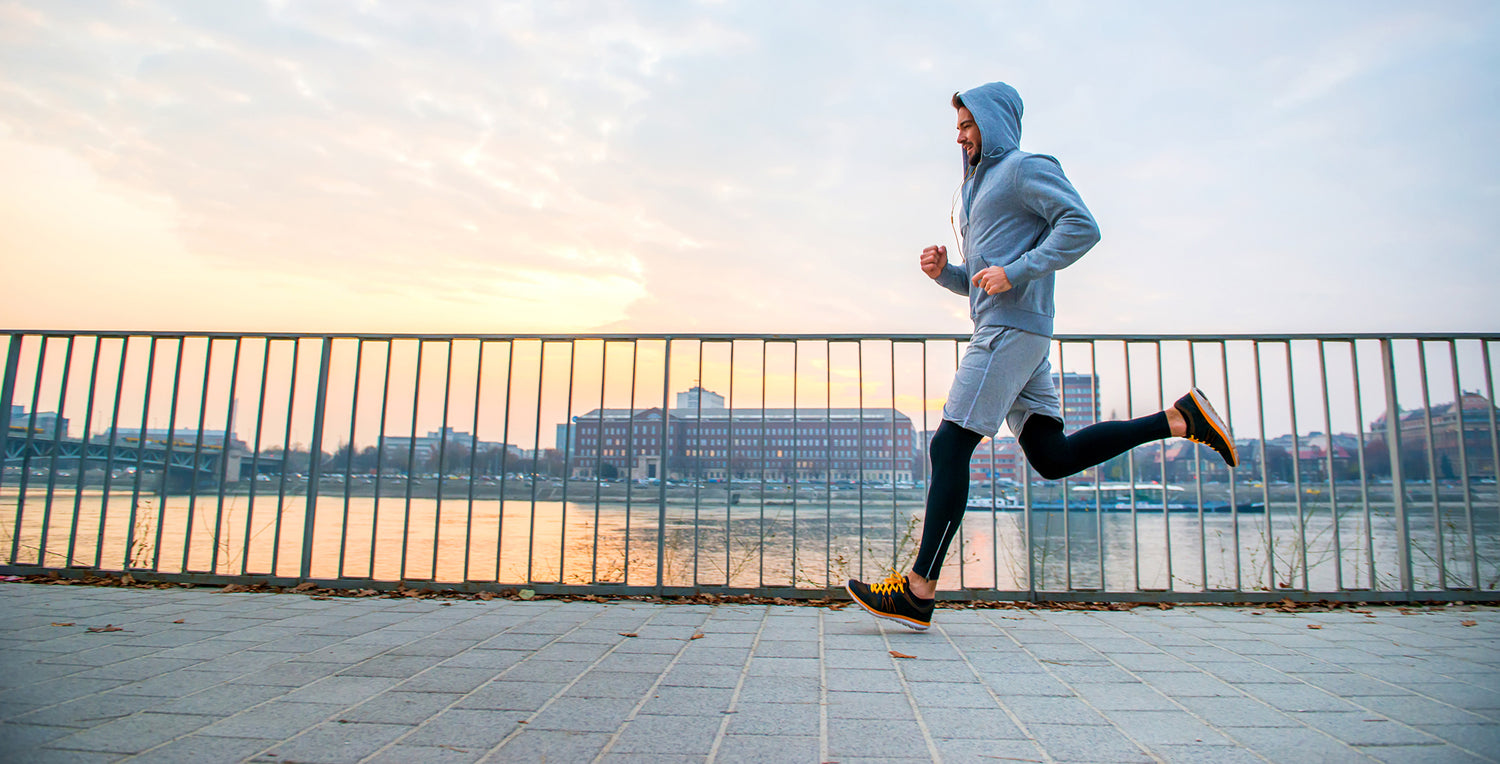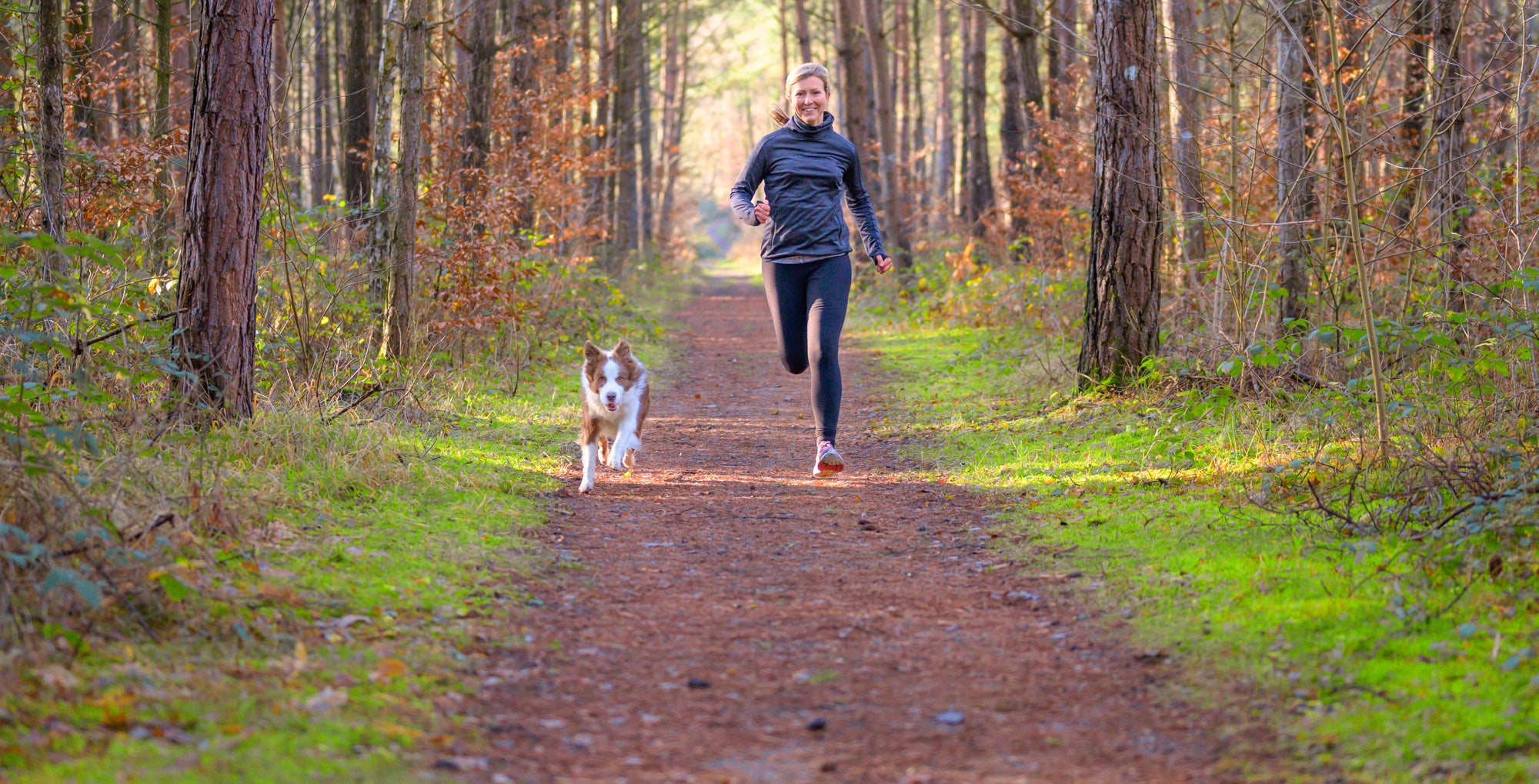It’s funny how cold weather can just sneak up on us sometimes. One day you’re out for a run in just shorts, the next it needs to be leggings. It might not always seem like it, but the change in temperature means you need to take some extra precautions to prevent cold weather injuries. With that said, here’s our top tips on how to prevent cold weather injuries when exercising.
But you don’t have to just take it from us. We spoke to Ashley Watson; elite athlete, sports therapist and powerlifting coach; to give us his professional advice on the best ways to stay injury-free in cold weather. He’s the founder of Sports Injury Clinic, Anatomy Well-being, and has worked as sports therapist to a number of elite athletes, including the GB Bobsleigh team and Peterborough United FC Academy. What’s more, he was also an academy football player, national sprinter and former brakeman with the GB Bobsleigh team!
Of course, there’s a whole range of situations in which you might be exercising or playing sports during cold weather. Maybe it’s your normal morning run, maybe you’re cross-country skiing (bit hard to do that in warm weather). Whatever the situation, the tips below will help.

Warm up properly to prevent cold weather injuries
“In the winter season I tend to treat more muscle strains, specifically calf and hamstring strains, as people are not warming up well enough,” explains Ashley.
“People tend to keep their warm up the same as always, what people don’t realise is your warm up should be adapted to your environment. If it is very hot you may want to be more specific in your warm up so you don't overheat yourself and lose too much salts and fluids. If it is very cold, it would be advised to wrap up well and do a longer warm up.”
Warming up is an essential part of exercise as it gets your muscles ready to move. If you exercise or play sports without first warming up, then your muscles might object to any of the intense movements you make, which could lead to the injuries Ashley mentions above. A proper warm up will also help you get the most out of whatever it is you’re doing, be that running faster or helping you exert more power.
The best ways to warm up are with motion. Try to walk about and do some light jogging for about 10 minutes; work in arm circles and leg swings (gently) to get your joints loosened up. Particularly important is to focus on any already stiff or damaged areas, as a problem in one place can affect the rest of your body during exercise. Above all, don’t overdo it - just build up gently and then you’ll be ready to go!

This man is sensibly stretching his quadriceps before he runs.
Slippery surfaces lead to trouble
Ashley also cites icy and muddy surfaces as a big culprit for rises in sprains over the winter months, “I see lots of ankle sprains due to falls on ice or on muddy surfaces. Ankles seem to be the most common sprains, but there are also wrists and knee injuries. Slippery surfaces are often to blame!”
Being careful when it comes to ice and other slippery surfaces is a big factor in preventing cold weather injuries. Sadly, ice is probably going to be a no-go if you’re out for a run, as the inherent imbalances that come with running - and having all your weight on one foot - are big risks for falling. All you can do is avoid them or walk gingerly across if you have to.
If you’re playing sports on a pitch during cold weather (more on that below), then consider swapping in longer studs on your boots to give you better grip.

Make sure you eat and drink enough
Yes, you’ve almost certainly heard it all before - in cold weather, you use up your energy stores more quickly anyway. That on top of the demands of exercise means that you’ll need to eat more to replenish those stores. Drinking plenty of water is also important because dehydration can happen more easily in cold weather than at mild temperatures.
You may have heard that once you start having a headache, dehydration is already setting in, but that it’s not too late to have water at that stage. Unfortunately, cold weather can reduce the body’s ability to make you feel thirsty so make sure you’re drinking enough water preemptively. This also helps to keep your core temperature up!
In the end, the main point of drinking and eating enough during cold weather is to prevent hypothermia, which is something that anyone (including athletes) is at risk of if they are exposed to consistently cold temperatures.
Wrap up warm
Coming in with some more advice that is likely not so surprising, make sure you’re wearing enough to keep warm. In the UK, we might not think of frostbite or hypothermia as being problems but not being properly prepared can lead to plenty of problems.
The best way to dress for cold weather is multiple layers because it allows you to more easily control your temperature. Think of it this way: sitting on the bench at a football match? You’re not moving around much, maybe a big puffy jacket is needed. But once you’re out on the pitch, it might not be so suitable… Which is why you have a good thermal layer, gloves, etc., that will keep you warm enough as you run around. Clothes that wick away moisture are also a good option to prevent sweat making them damp, which can prevent them keeping you warm.
Winter football and rugby injuries
Football and rugby are played all year round, so it’s to be expected that cold weather and some of the other conditions - read: rain - that winter brings can make injuries more likely. These injuries can come down to issues already mentioned above - mainly not adapting warm up to the conditions.

A cold and hard pitch increases the risks of injury
There are three other main factors in winter that can make football and rugby injuries more likely.
- Pitches are harder during the winter because the ground is colder, so any falls will have a heavier impact.
- Heavy rain (and cold ground) can lead to a waterlogged pitch that becomes muddy and therefore slippery.
- Both of these can also make it easier for studs to get stuck in the ground. Many knee, ankle and hip injuries result from the leg trying to twist or move and not being able to.
Ashley told us about a couple of injuries that are prime examples of this third problem.
“I once had a patient who ruptured the ACL, MCL, PCL (three main knee ligaments) and meniscus in the knee playing football. That is quite some injury and occurred when the player was changing direction.” The knee is sensitive to sudden twists or changes in direction, and an injury like this can spell the end of a career.
Whether a return to playing is possible or not, proper rehab after an injury like that is essential, which is exactly what sports therapists like Ashley can support with. “After the patient had surgery they were immobilised, then I saw them for the first time a week after the cast was removed. We started with working on range of movement, then moved on to strengthening exercises. We also did a lot of proprioception and stability exercises, which were important as the patient had a clear goal to return to football.”

The second injury was a rugby player with a fractured pelvis.
“The player was being tackled and unfortunately got their boots wedged into the grass. As this happened the opposing player fell awkwardly on the patient, which resulted in a fractured pelvis.”
Ashley explained to us how the bioelectronic technology that NuroKor Lifetech uses can make a difference when recovering from injuries.
“In the acute phase of an injury when there is a lot of pain due to the inflammatory response or connective tissue damage, NuroKor can be very useful. Using NuroKor can help reduce pain which then allows for more efficient and quality rehabilitation. When people have pain present, they tend to feel less confident and limit certain movements which they should be doing.”
For more about rugby injuries, have a look at our guide about the most common ones, their treatment and recovery tips.
It’s not just a fall that can hurt
Cold weather naturally brings more colds and coughs, but you wouldn’t expect this to lead to more serious injuries. While you probably won’t experience what the person below did, no one likes having a cold so make sure you wrap up warm, wash your hands thoroughly and regularly, and avoid touching your eyes, nose and mouth if you can. And don’t go near sick people if you can.
But here’s Ashley to tell us about how a big coughing fit was the cause of one of the oddest injuries he has treated. “I once treated a patient who had a complete back spasm caused by coughing. The patient literally had no movement in the spine and was in significant pain. The coughing fit caused inefficient intra-abdominal pressure. A lot of sudden pressure on the back can cause this to happen.”

Back spasms are sudden tightness or pain in the back, often as a result of overuse or injury, perhaps even sleeping in a strange position. Normally treated with over the counter painkillers, hot or cold therapy, back spasms commonly get better at home without professional intervention.
But in this case, Ashley’s expertise was required. “I had to start with a technique called dry needling as the patient was in so much pain to do anything else. Once movement was restored, we started on an exercise rehab routine. At the time I hadn’t been introduced to NuroKor, but if I had, this would have been another good go-to option to help with the pain management.”
Regular stretching, walking and exercises that strengthen your back muscles can help prevent future back spasms. If you’re finding yourself feeling sore after these kinds of activities, you can use NuroKor Lifetech devices to help relieve that pain and optimise your recovery.
We hope these tips for preventing injuries during cold weather help you stay safe when you’re out and about. We’re also sorry if you, like us, have a newfound fear of coughing fits - we’re keeping Ashley on speed dial just in case.
Our thanks to Ashley for his advice. Find out more about Anatomy Well-being and follow Ashley Watson on his Instagram or Facebook for more sports therapy guidance.



